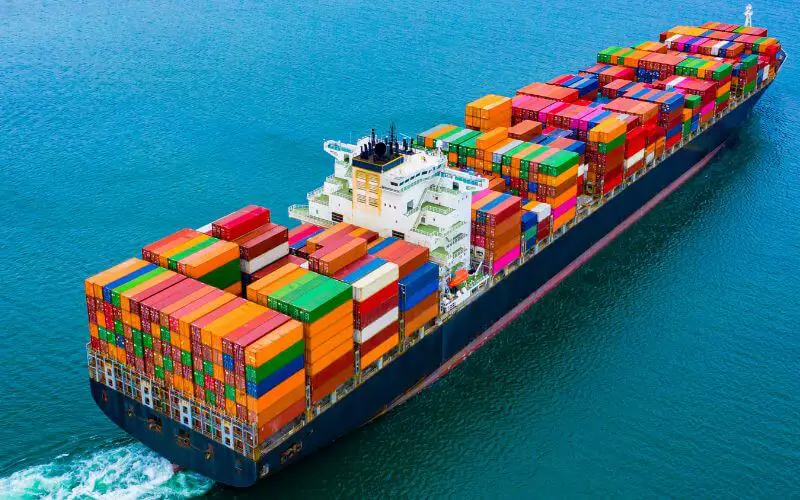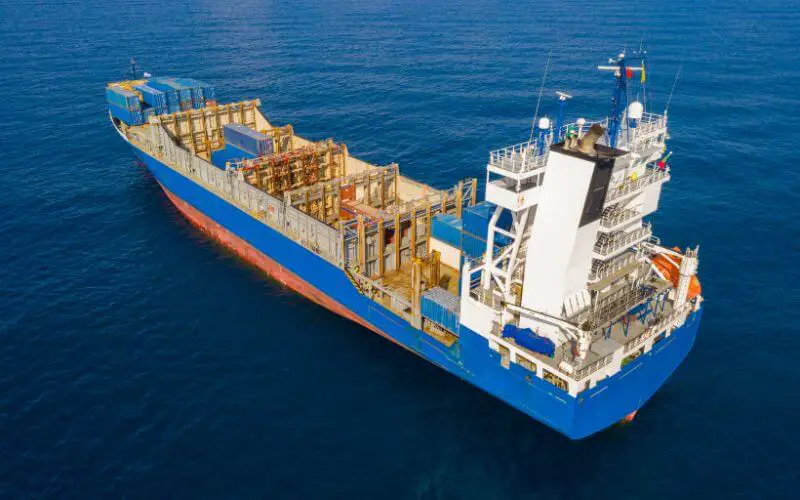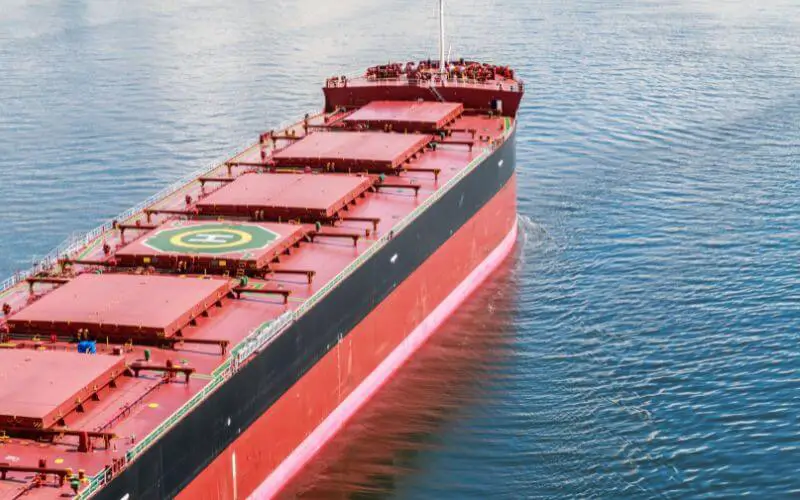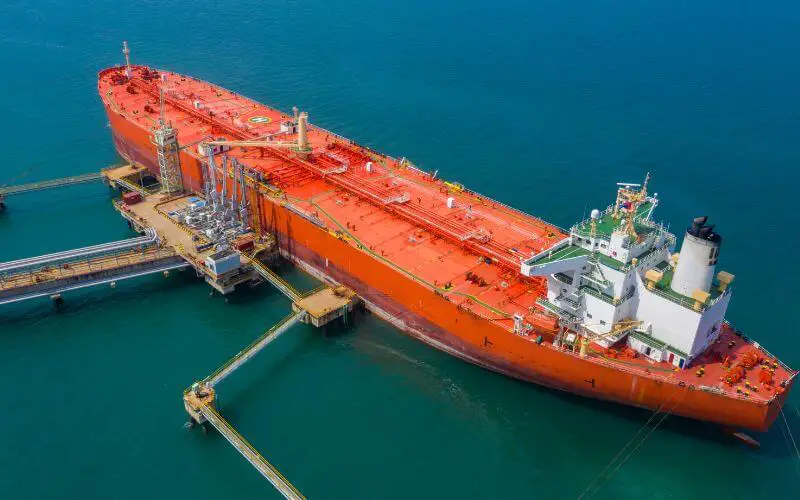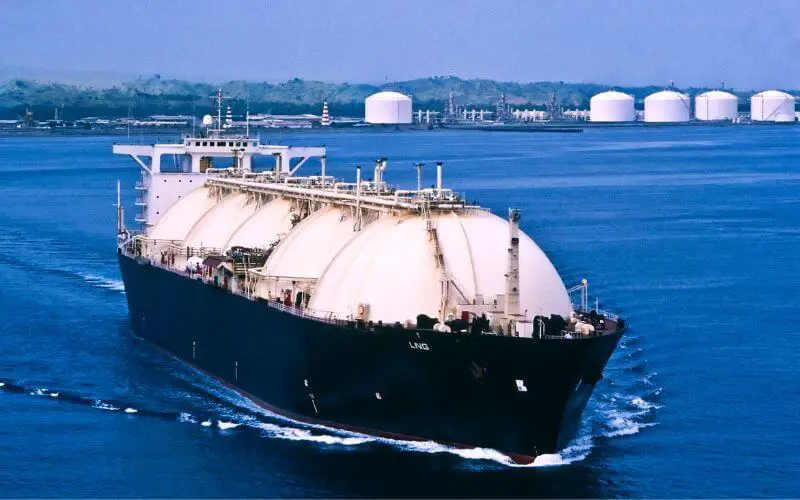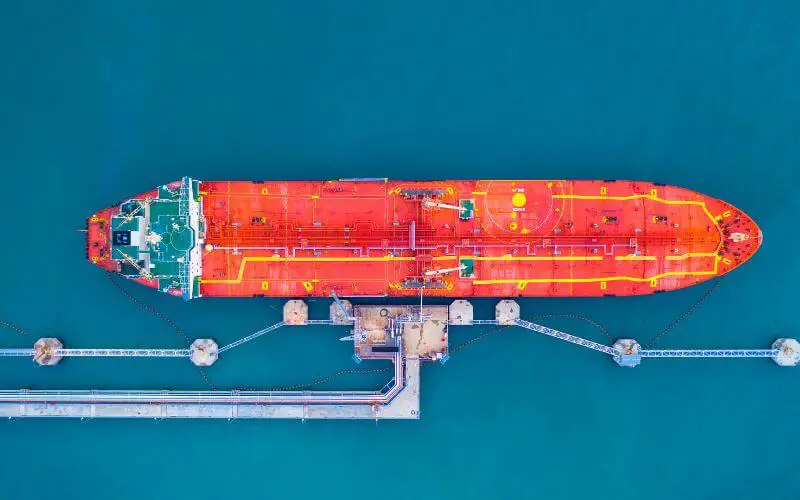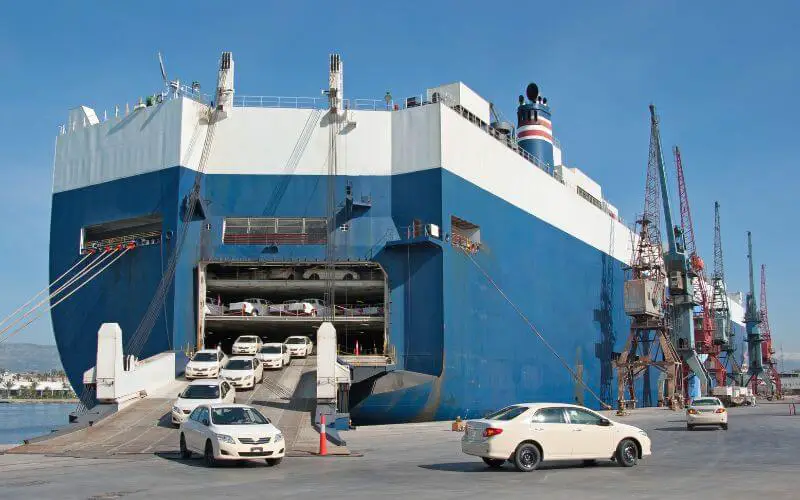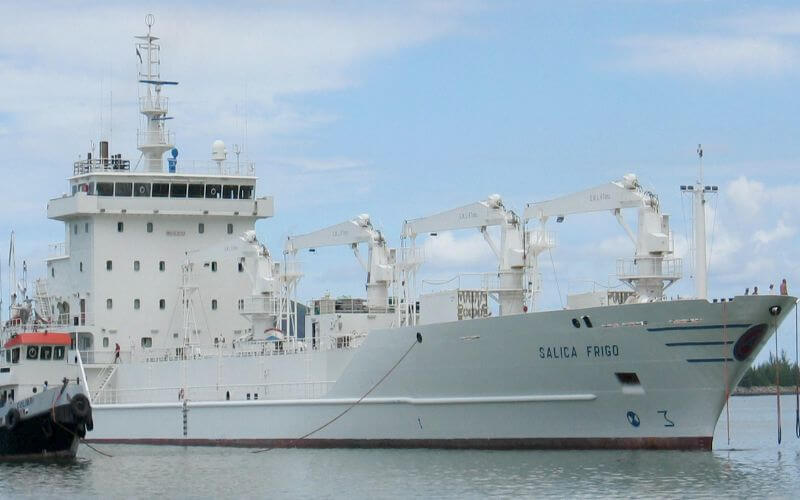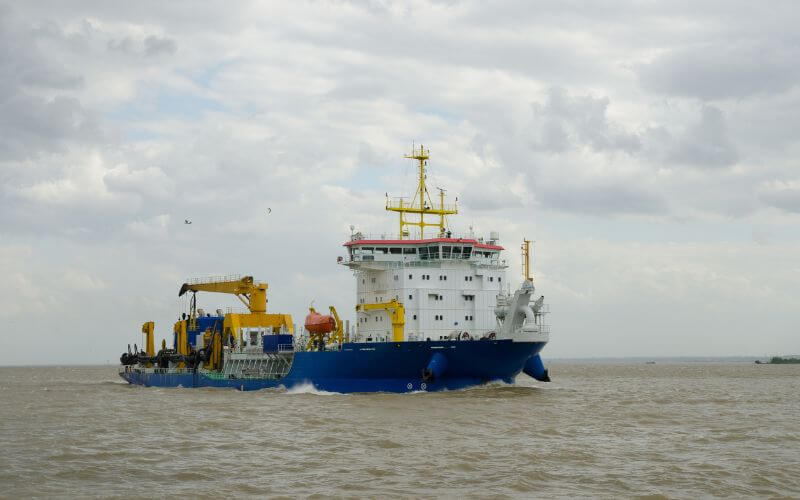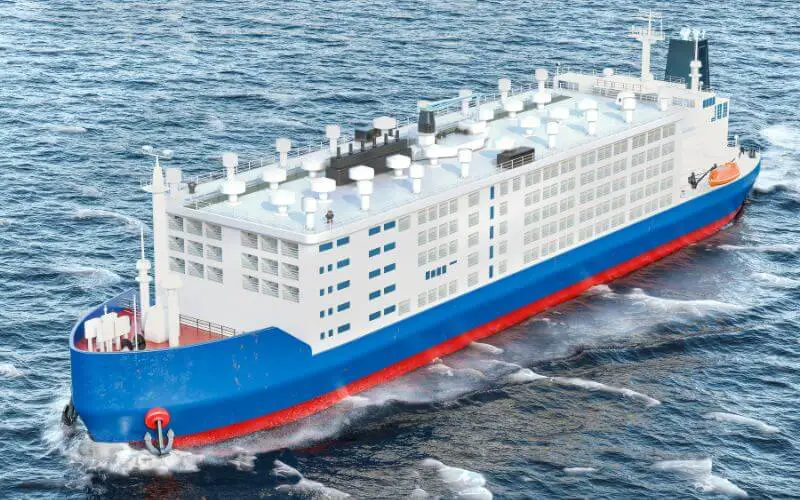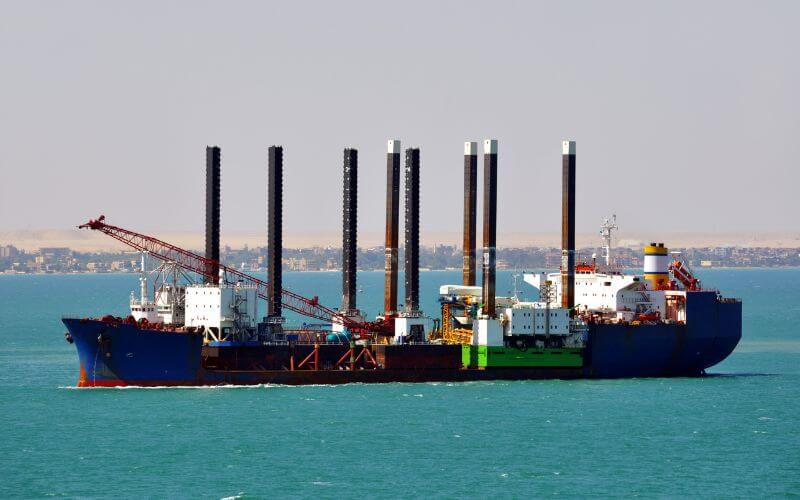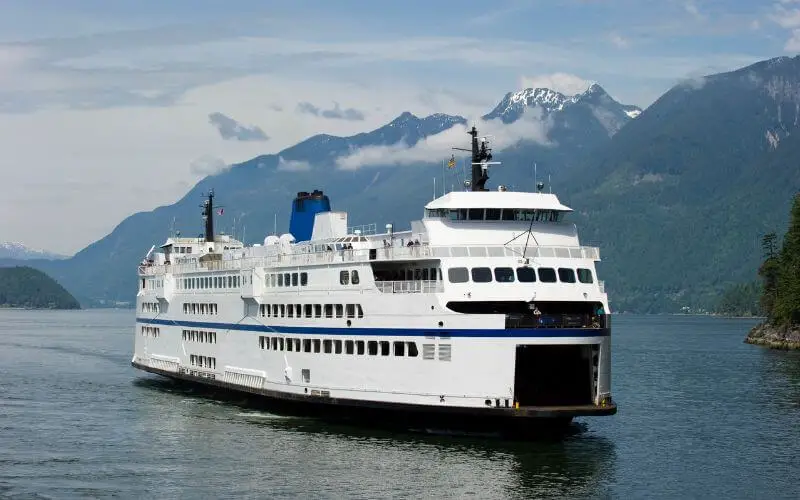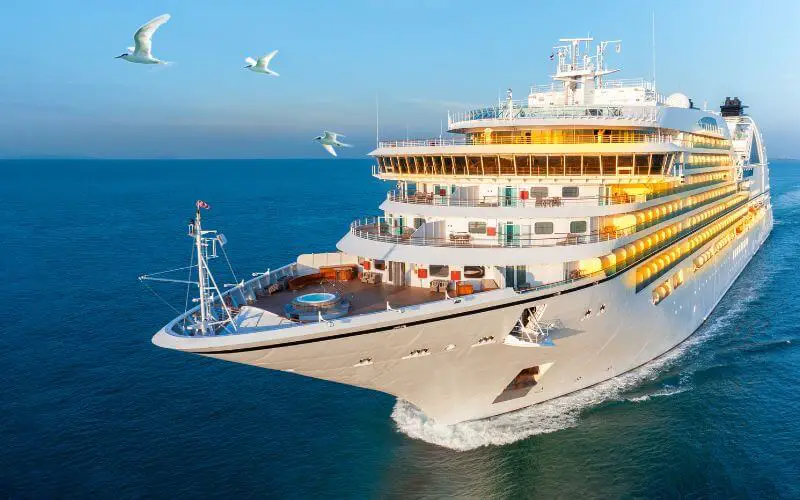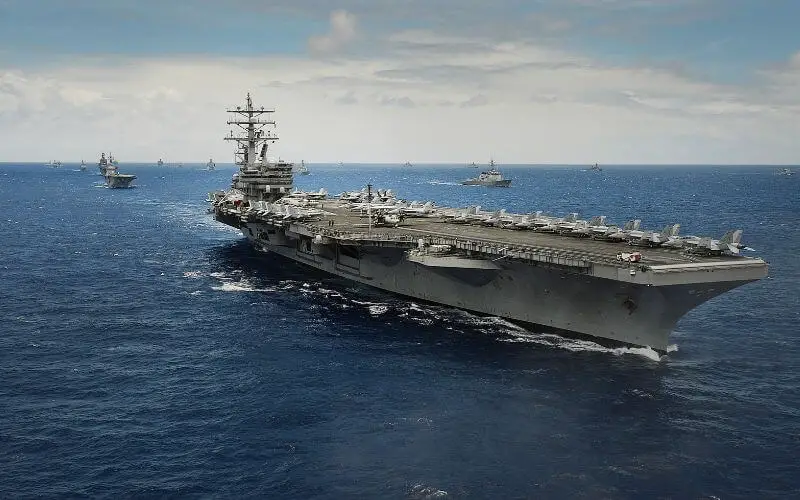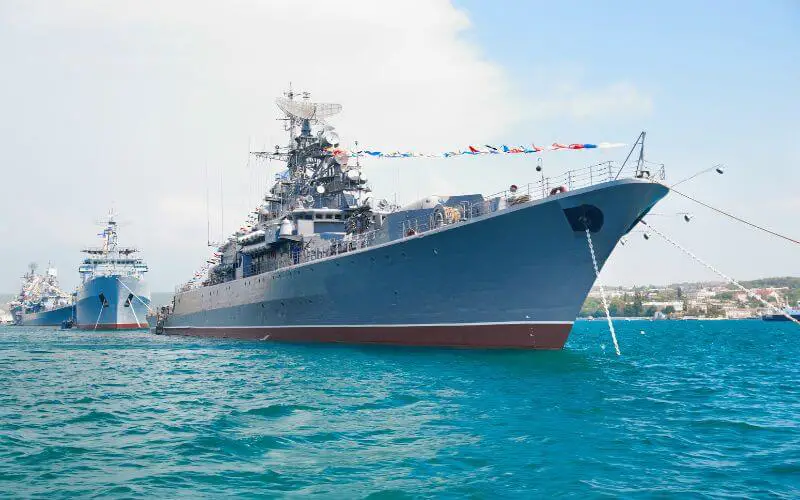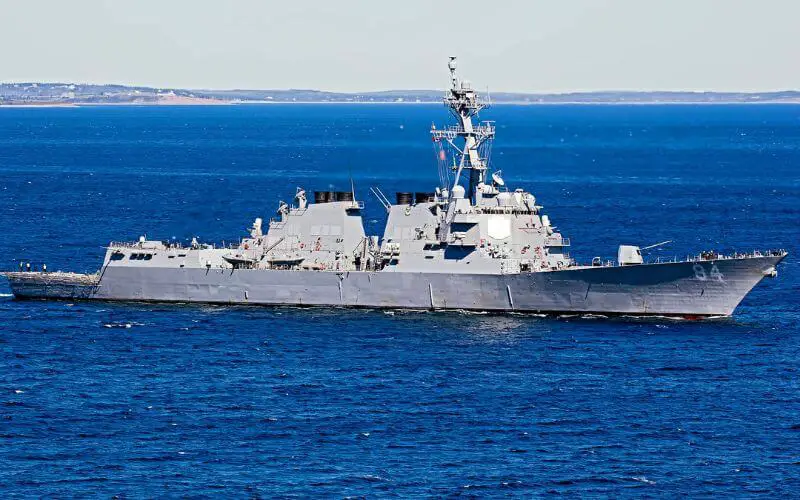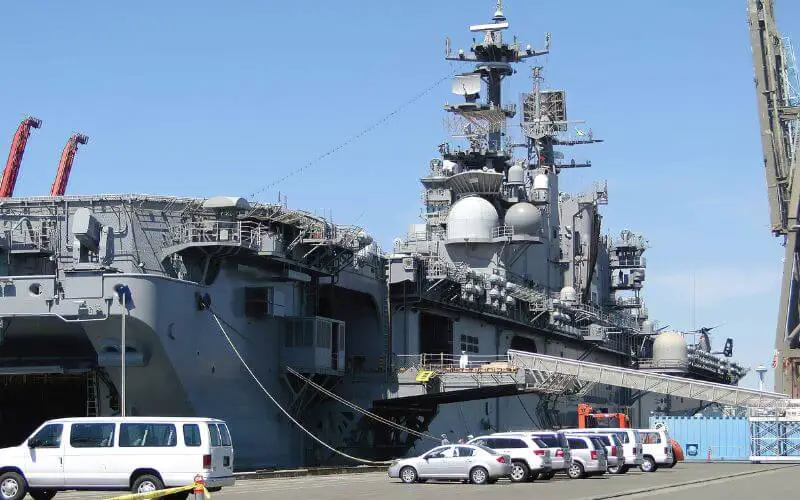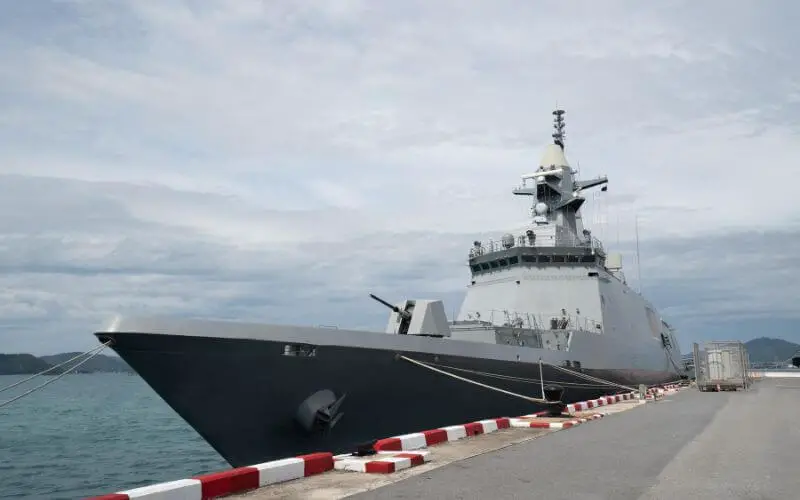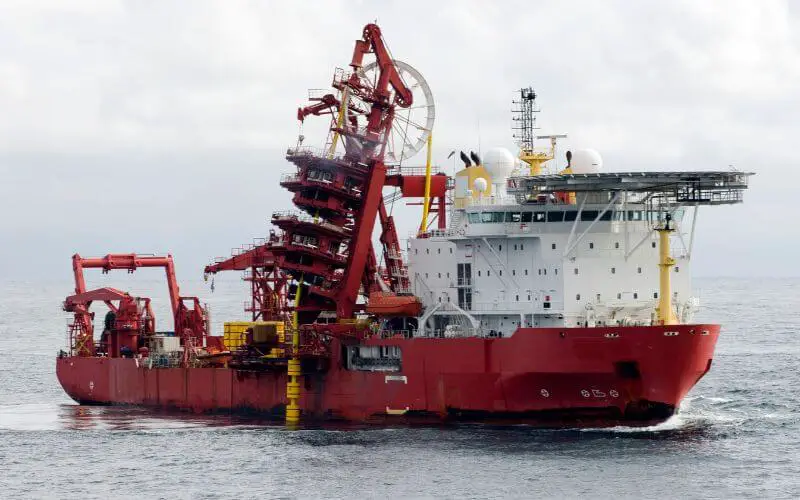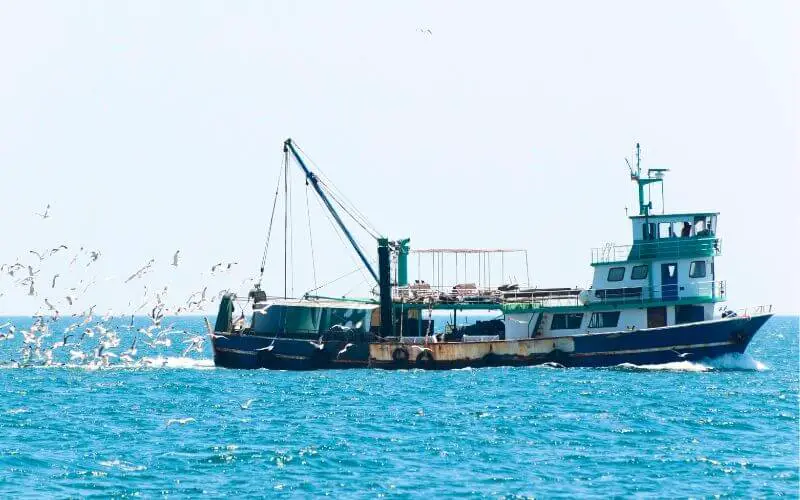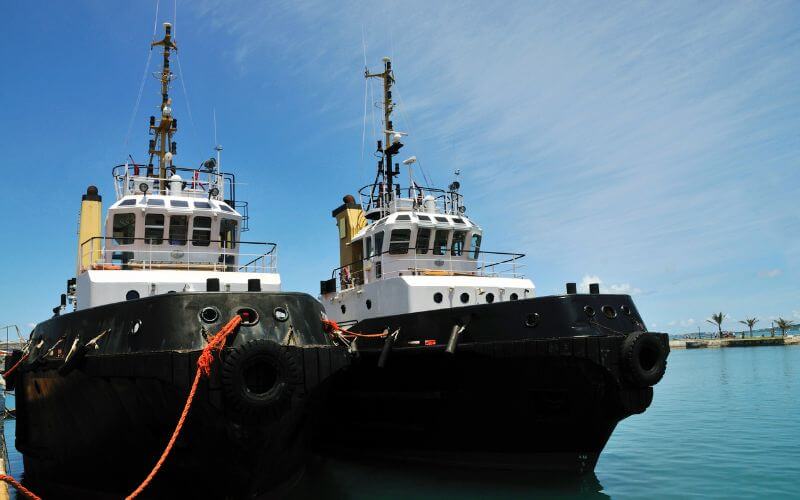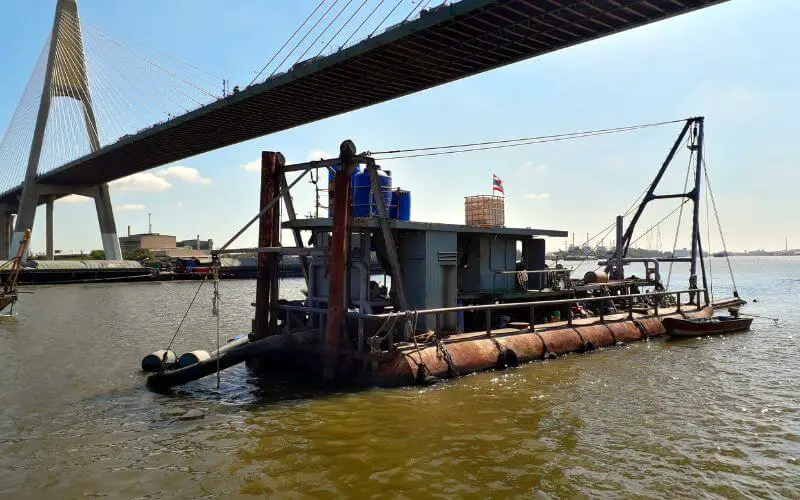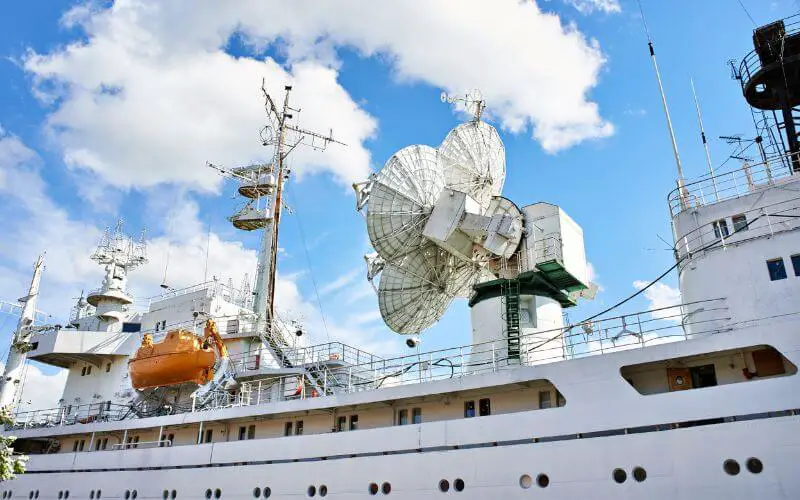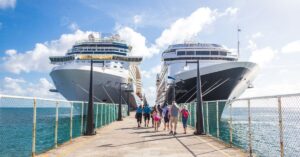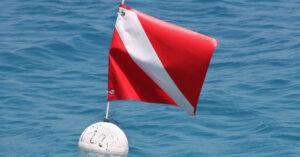Have you ever thought about the numerous types of ships navigating our seas? To assist you in knowing the ocean of possibilities, we have compiled this guide for the various types of ships.
We will cover everything from large and slow ships that carry goods to fast and advanced military ships. We aim to give you an interesting and professional summary of ship types in the shipping industry. So let us start.
Brief About Ships
You can define a ship as a very large boat or watercraft traveling in the deep seas and oceans and transporting people or cargo from one port to another. Since the introduction of aircraft for overseas travel, passenger ships have been limited to short-distance travel and recreation purposes. Specially built ships are used for military (defense), research, and other purposes.
We all know why a small stone sinks in the water while a large ship floats. This is explained by Archimedes’ principle, which states, ‘the net upward force exerted on a body immersed in a fluid (water) is equal to the weight of the fluid displaced by that immersed body.’ This is also called the law of buoyancy.
A small stone immersed in water displaces less water than its weight and hence drowns. On the other hand, due to its colossal size and hollowness, a ship displaces more water than its weight; thus, the higher upward force keeps it floating.
In the olden days’ merchant, commercial ships were propelled by using human power and assisted by sails hoisted on a mast erected in the ship. Hoists could be used only when the wind was in a favorable direction.
Ships came in various shapes and sizes, with usually three, sometimes four masts. The largest ever built was the steel-hulled German ship “Preussen,” which had 5 masts.
Present-day ships are propelled by rotating propellers driven directly by a diesel engine or driven by an electric motor through a gear system. Some faster ships use gas turbine engines to run the propeller. Military or defense ships make use of nuclear reactors to produce electricity.
Different Types of Ships
The ships can be broadly categorized into
- Cargo ships
- Passenger ships
- Naval or military ships
- Special purpose ships
Further, each of these categories of ships is subdivided into types of ships based on their function.
Types of Cargo Ships
Cargo ship is used to transport cargo from one port to another, and the cargo can be dry, liquid cargo, containers, etc.
Based on the type of cargo carried by the ship, a cargo ship is subdivided into the following types:
- Container ships
- Container Feeder
- Bulk carrier ships (Dry bulk ships)
- Tanker ships
- Oil Tankers
- Liquefied Gas Carriers (LPG & LNG)
- Chemical Tankers and Chemical Products Carriers
- RoRo ships (Roll-on Roll-off ships)
- Reefer vessels or ships
- Special cargo ships
- Livestock ship
- Heavy lift vessel or ship
Container Ships
As the name indicates, container ships are designed and built to carry several different container sizes. A container is a hollow metal box that has sufficient strength to hold the cargo placed in it. The container may contain electronic goods, packaged food products, machinery, etc.
A container can accommodate manufactured products, from packaged foods to machinery, cars, and refrigerated cargo. A process known as containerization allows container ships to transport all of their cargo in intermodal containers the size of a truck.
Container ships are moderate size merchant ships with a speed of around 20 knots. The size of the container ship can be restricted by the ports to which they operate or the canals they are required to cross.
Diesel generators power the propulsion system, and the space used for the drive system and the crew space is compact to allow more room for the containers.
The dimensions of a container are 8 feet in width and 8.5 feet in height, and the length can be 20 feet or 40 feet. The design of the container is suitable for lifting with a crane and stacking on the ships, and the size is ideal for a motor truck to carry the container from the dock to its destination by road.
An average container ship can accommodate 10,000 to 15,000 containers. In the first stage, the ship is loaded with the containers below the deck level. Then the hatches are closed with a hatch cover from the top, and depending on the design and stability of the ship, multiple layers of containers are loaded.
The ship will have structural designed arrangements to hold the containers safely in place till they are unloaded at the destination port. The containers are fastened to the ship structure and also with each other for good integrity (they are secured to the ship using turnbuckles, etc.).
Container ships do not have a cargo handling gear (crane) in the vessel since the loading and unloading of the containers are done by the cranes at the dock terminals or the shore.
The drawback of a container ship is that the volume of the cargo carried by it is less than the volume of the cargo carried by a regular cargo ship.
The reason is the metal containers will occupy space, and due to the container’s rectangular shape, all the nooks and corner spaces cannot be utilized. Secondly, the container ship needs loading and unloading arrangements at the port and storage area.
Container Feeder
Container Feeders are pivotal in maritime logistics, often described as the unsung heroes of global shipping. These medium-sized vessels serve as intermediaries in the vast network of container transport.
Their primary task is to collect containers from smaller, nearby ports and deliver them to larger container terminals. From there, the containers are loaded onto massive container ships for long-distance transportation, connecting local and regional shipping operations with global logistics.
Bulk Carrier Ships (Dry Bulk Ships)
Bulk carrier ships are designed for the transportation of loose and dry cargo items in large quantities, such as coal, ores, food grains, and similar items. The length of a bulk carrier ship can be 800 to 1200 feet.
This ship has huge cargo hatches and resembles container ships, like the absence of onboard cargo handling gear. However, when the ship is loaded, you can know it is a dry cargo bulk ship since no containers are on the deck. The deck of the dry bulk ships is divided into multiple separate holds, and a hatch covers each hold.
Some designs of bulk carrier ships may carry a fixed type of self-loading and unloading cranes on their deck.
Tanker Ships
As the name indicates, they are ships designed for transporting a huge quantity of liquid cargo, subdivided based on the type of liquid cargo they carry.
They come in many different sizes, but some larger vessels carry several hundred thousand tons of liquid cargo. Many tanker ships add inert gas into the tanks to reduce fire hazards and make them safe.
Tanker ships are divided into various types based on the cargo they carry. The three main types of tanker ships are oil tankers, liquefied gas carriers, and chemical tankers and chemical products carriers.
Oil Tankers
Oil Tankers, as the name suggests, are vessels designed specifically for the transportation of crude oil. These ships can also carry refined products derived from crude oil.
These massive ships play a vital role in global commerce, as they’re responsible for transporting a large portion of the world’s oil across seas and oceans.
Liquefied Gas Carriers (LPG & LNG)
Sometimes referred to as gas tankers, Liquefied Gas Carriers are specifically engineered to transport various types of gases in their liquid state. These include LPG (Liquefied Petroleum Gas), LNG (Liquefied Natural Gas), amongst others.
These carriers have been constructed to safely handle gases that are cooled and thus liquefied, a process that reduces the volume and allows for these substances to be transported in bulk.
Chemical Tankers and Chemical Products Carriers
This carrier is called a chemical tanker and is used for the transportation of huge quantities of alcohol, chemicals, and chemical products that are in liquid form. The chemical products may be hazardous.
There can be dedicated tanker ships to transport juice, wine, or any other bulk products.
Ro-Ro Ships (Roll-on Roll-off Ships)
Ro-Ro is the acronym or short form for ‘Roll-on roll-off’ ships, and it describes how the cargo is loaded and unloaded from the Ro-Ro ship. Unlike a regular cargo ship which uses a crane for cargo handling, the cargo of the Ro-Ro ship rolls on and rolls off the ship on its wheels.
The self-propelled cargo, like cars and trucks, rolls on and off the ship on its wheels. A cargo without wheels (not self-propelled) is placed on self-propelled handling equipment and rolled into the ship, and it remains like that till it reaches the destination port.
The working of a RoRo ship is similar to a huge parking house with ramps connected to its hull for rolling on and off the cargo. The dead weight of a Ro-Ro ship can be up to 50,000 tons.
Ro-Ro ships are built to carry wheeled cargo (cars, motorcycles, busses, and trucks) between two ports, and you can identify them by their huge doors in the hull and foldable ramps. The ramp can be folded down to allow the entry and exit of cars and trucks into the ship. The wheeled cargo is accommodated on multiple decks.
Reefer Ships
Reefer ships are designed and built for the transportation of refrigerated cargo and perishable food items, such as fruits, vegetables, meat, etc. The perishable cargo is packed into the cargo holds, then sealed, and the temperature is maintained at a refrigeration level.
The traditional reefer-type ships are being replaced by refrigerated containers, which are transported by container ships. The reefer ships and refrigerated containers in container ships need electricity to maintain the cargo at refrigeration temperature. They are also to be inspected by the ship crew during transit to take corrective action, if any.
Special Cargo Ships
Not all cargo can be handled by regular freight carriers. Some goods require very specific conditions for storage, as well as unique methods for loading and unloading. This is where Special Cargo Ships come into play.
These vessels are designed and equipped with specialized storage facilities and handling systems that cater to the unique requirements of such cargo. Whether it’s oversized machinery, delicate artworks, hazardous materials, or perishable items, these ships ensure the safe and efficient transport of goods that can’t be accommodated by standard cargo vessels.
Livestock Ships
This is a special-purpose ship for transporting livestocks, and the ship’s capacity can be more than 100000 sheep. The important requirement of a livestock carrier is sufficient ventilation, sanitation facility, food, and water. Also, the ports should have facilities for fast and safe livestock handling.
These ships are often converted from other types of vessels and are equipped with pens for large numbers of animals.
Heavy Lift Ships
In the world of maritime transport, Heavy Lift Ships occupy a niche of their own. They are uniquely designed to carry exceptionally heavy and oversized cargo, such as oil rigs, large machinery, and dredgers, that surpass the carrying capacity of standard container or cargo ships.
These robust vessels are engineered with reinforced hulls and powerful engines. They are often equipped with cranes for loading and unloading cargo, making them instrumental in several industries, including oil and gas, construction, and dredging.
Types of Passenger Ships
Passenger ships are mainly used for transporting passengers. This was the only mode of transportation between one country and another that was separated by oceans before the introduction of passenger aircraft.
Passenger ships offer a unique and enjoyable travel experience, allowing passengers to visit different locations and participate in leisure activities.
The different types of passenger ships are:
- Ferries
- Cruise ships
Ferries
Ferries are passenger ships, and the standard feature of a ferry is that it accommodates passengers and their vehicles.
Ferries have more than one level deck and have low-level side entrances for the entry and exit of vehicles. They will have seats and cabins to accommodate passengers. Ferries are generally operated on short distances, overnight, or day-long runs.
A special ferry built for transporting four-wheeled vehicles and their passengers across the river or the harbor water is called a ‘double-ender ferry.’ The specialty of this ferry is its entry/exit at both ends of the hull; vehicles can enter from one end and exit from the other after crossing the water.
This ferry has propulsion at each end for excellent maneuverability and stopping ability. However, it requires a specially built dock for easy entry and exit of vehicles.
The recent construction of long-distance bridges and tunnels for crossing rivers has brought down the popularity and usefulness of ferries. However, they have not yet vanished completely.
Cruise Ships
A cruise ship is a luxury ship for recreation, and it resembles and has all the facilities of a five-star hotel and state-of-the-art amenities. The cruises may be used for pilgrimage purposes also.
The cruise ship may have the capacity to accommodate a few hundred or a few thousand passengers, depending on the duration of the trip and the distance covered. Since the cruises are popular in places with tropical climates.
The cruise ships usually are painted white, and the ship’s structure contains many decks to accommodate the passengers with all the required luxuries. The cruise ship’s speed is much less compared to other vessels. Multiple numbers of diesel generators produce alternating currents to meet the needs of propulsion and passenger amenities.
The amenities on a cruise include shops, theatres, restaurants, casinos, entertainment games, swimming pools, cinemas, and luxury suites and dining halls. The size of a cruise ship can be up to 1150 feet long and 190 feet wide.
Interesting read: Top 10 List of World’s Largest Cruise Ships
Types of Naval or Military Ships
A country’s Navy uses a naval or military ship for military purposes and to safeguard the country’s territorial waters. The construction of the naval ships is different from the other ships. Naval ships are specially designed to have more flexibility and toughness and are equipped with weapons.
Different types of Navy or military ships are:
- Aircraft carriers
- Navy cruisers
- Destroyers
- Amphibious assault ship
- Frigates
Aircraft Carriers
Aircraft carriers have the facility to carry fighter aircraft, and the deck has runways for takeoff and landing. An average aircraft carrier can carry 80 or more fighter aircraft. Nuclear reactors usually power these, or some may use diesel generators.
The aircraft carriers have the facility to store, launch, recover, and maintain the fighter aircraft used for the defense of a country. The advantage of an aircraft carrier is it can attack the enemy from nearer to its territory.
A huge aircraft carrier not only carries several freighter aircraft but can also accommodate a few thousand persons, including crew, military personnel, and others.
Navy Cruisers
The role of Navy Cruisers in today’s naval warfare cannot be understated. Modern cruisers are primarily used as guided-missile launch platforms, providing a multi-mission offensive and defensive capability. They can potentially target enemy missiles, aircraft, or hostile naval vessels, paralleling the evolution of military tactics and technology.
These formidable vessels are often powered by nuclear reactors. Which offer impressive speed while promoting sustainability by reducing reliance on fossil fuels. A typical cruiser can weigh upwards of 10,000 tons.
Destroyers
A destroyer is a naval ship that can attack the enemy on land, air, and water surface and has defense capability against submarines. This military ship has huge weapons like missiles, large size guns, and small size weapons in its arsenal.
A class of destroyers called torpedo boat destroyers can attack torpedo boats and protect the fleet of naval ships from torpedo attacks. A torpedo boat destroyer is bigger than a torpedo boat but smaller than other naval ships. However, the regular destroyer ships were later armed with torpedoes.
Even today, the destroyers are the protectors of the fleet of military ships equipped with antisubmarine weapons and depth chargers. Destroyers are capable of high speeds of up to 30 knots.
Amphibious Assault Ship
The amphibious assault ship enables placing marines onshore employing helicopters and landing crafts (landing craft is a small or medium size watercraft used for transporting a landing force from the amphibious assault ship to the shore).
Since the primary purpose of this military ship is the transport of marines using helicopters, it has a big landing deck. The amphibious assault ship carries the marine military personnel and their equipment, armored vehicles, and other equipment.
Frigates
Frigates are similar to destroyers in their role but much smaller in size. They escort other ships and protect them from air, surface, and underwater attacks. Frigates have good maneuverability, but their speed is normally less than a destroyer.
A frigate carries torpedoes and arms; however, its main capability is to attack submarines. Frigates can have helipads and depth charges.
Types of Special Purpose Ships
Special purpose ships are vessels designed and built for specific functions or specialized operations. These ships have unique features and equipment that enable them to perform specific tasks or meet specific requirements.
Some types of special purpose ships are:
- Industrial Ships
- Offshore Vessels
- Fishing Vessels
- Tugboats (Tugs)
- Dredgers
- Research Vessels
Industrial Ships
An industrial ship is a vessel used for its industrial function at the sea/ocean, and the function can be the processing of fish and other seafood in the ship (this ship is called the mother ship), offshore oil drilling, etc. Industrial ships are also used for disposing of hazardous industrial wastes by incinerating (burning).
Offshore Vessels
Offshore Vessels are a testament to the marriage of maritime engineering and advanced technology. These specialized ships provide crucial support to offshore oil and gas operations.
Their duties span a wide range, from resupplying offshore platforms with provisions, transporting vital equipment, and ensuring personnel movement to perform maintenance and repair operations.
Fishing Vessels
Fishing Vessels form the backbone of the commercial fishing industry. Far more than just boats with nets, these ships are equipped with facilities for the processing, storage, and sometimes even on-board preservation of fish and other marine resources.
Fishing Vessels function as floating factories. Their design considerations include not only fish catch and storage but also the crew’s welfare on extended sea ventures.
Tugboats (Tugs)
Tugboats are designed to navigate crowded ports and assist larger ships. These powerful vessels are specially designed and equipped to assist larger ships in maneuvering through ports, canals, and other tight spaces.
Modern tugs are highly maneuverable, with pulling power that can exceed 100 tons. There are three main types of tugboats: harbor tugs, escort tugs, and ocean-going tugs. These tugs are equipped with impressive bollard pull, towing equipment, and advanced systems for maneuvering.
Many modern tugs are designed with firefighting capabilities. And all serve crucial functions in the movement and control of vessels in various marine environments.
Dredgers
Dredgers are specialized vessels used for a specific purpose: to excavate and remove underwater sediment, rocks, and debris from waterways, ports, and offshore locations.
By removing these materials, dredgers help improve navigation in harbors and shipping channels, provide construction and land reclamation material, and support environmental restoration projects.
Different types of dredgers include suction dredgers, trailing suction hopper dredgers, and cutter suction dredgers. These ships are equipped with specialized equipment such as suction pipes, cutter heads, and dredging pumps to facilitate excavation.
Research Vessels
Simultaneously serving as floating laboratories and explorers of our planet’s final frontier, Research Vessels deliver an invaluable contribution to the scientific community.
These vessels are purpose-built for conducting various scientific endeavors, including deep-sea exploration, oceanographic surveys, and other marine-related research.
These ships offer the ability to probe into the mysteries of our oceans like never before. They are often staffed by scientists and researchers from various disciplines, joining their knowledge to study and understand the ocean’s complex ecosystems.
Conclusion
We trust this article has been as fascinating for you as it has been for us to compile. Our goal is to enrich your knowledge of this intricate field and shed light on each vessel’s pivotal role.
As we drop anchor on our guide, we hope you continue to navigate the waves of knowledge in the vast and intriguing world of marine engineering. Your journey with us may be at its end, but in maritime expertise, there is always more to discover.


